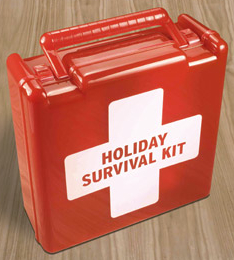 Last week we talked about what I feel should be done from a
top-down approach in helping to prevent and remedy diseases such as Type II
Diabetes. We touched on the responsibility of the education system, the
government, and the health care system in solving this issue. If you missed reading
it, check it out here!
Last week we talked about what I feel should be done from a
top-down approach in helping to prevent and remedy diseases such as Type II
Diabetes. We touched on the responsibility of the education system, the
government, and the health care system in solving this issue. If you missed reading
it, check it out here!
This week we dive into the most practical part of these
series: the personal action plan. As much as I would love for change to take
place in all the systems discussed previously, I know that often change happens
from the bottom up. It takes each of us demanding more from our farmers, our
doctors, and our politicians, that leads to change in the end. As I mentioned
last time, everything we buy is a vote for what we believe in and what we want
more of, so let’s see what votes you can place each and every time you go to
the grocery store to protect yourself, your family, and your community.
The Personal Action
Plan
These are the things that you can do to ensure that you and
your family will be protected from the hardship and heartbreak of preventable
disease. This is your best bet for optimal health and disease prevention.
1) Eat Less Carbs!
Between the food pyramid of old to the obsession with
“whole” grains today, carbs have always been a staple in our diet. But did you know that your body does not
actually NEED carbs to survive…or even to thrive. Yes, consuming vegetables
is good for the micronutrients, but do you really need 50% of your calories
coming from sugar?
And let’s make one thing clear: all carbs, whether complex,
simple, whole, sprouted, refined, or otherwise turn into sugar in the blood.
Eating whole grains will not lead to lower blood sugar or insulin control; you
need to lower your carb intake all together.
2) Eat QUALITY Meats
Eating grass-fed and wild meats provides the protein your
body needs to function at its best and the healthy fats to help your brain and
cells stay healthy. There is no substitute for animal protein because there is
no source of protein as DENSE. Yes, there is protein in rice and beans and
almonds. But per calorie it is very low. You would actually be better off
eating more spinach if you wanted to up your alternative protein consumption (it
is one of the densest forms of non-animal protein available).
The bottom line is that there really is no good substitute
and your body will NOT be able to perform as well without it. Did you know that
it was the cooking and eating of meat that allowed our species to flourish and
prosper? Before cooking meat, human ancestors were very small and weak. It was only after the discovery of fire and
improved hunting techniques that out our bodies and brains developed into what
we recognize as the modern human. I would also point out that it was the
cultivation and increased consumption of grain that actually lead to a step
BACK in our physical stature. I don’t want to get off topic too far, but this
is just to show that we humans have evolved to do our best with a healthy dose
of high-quality meats. So eat up and optimize your health and vitality!
3) Eat More Vegetables
Vegetables are some of the densest sources of micronutrients
and phytochemicals, both of which are important for keeping you and your body
working at it best. Most people think that taking a multi-vitamin is enough,
but in most cases, multi-vitamins actually lead to greater risks of disease!
This is because modern science is not even close to understanding all the pieces
that go into how our body metabolizes and utilizes all the different elements
that we derive from whole food sources.
The closest thing you can get is a “superfood” which is
basically dehydrated fruits and veggies, but even this is limited in the
variety of nutrients you derive. This is why eating a plentiful and varied diet
of veggies is critical.
4) Sleep
While this is not related to food directly, it has a HUGE
impact on your health and your ability to function at your best. Did you know
that limited sleep can actually impact your cells’ insulin sensitivity just as
much as if you were overeating sugar? Lack of sleep also makes you hungrier,
less capable of making decisions, increases your cravings, increases fat
storage, and makes your exercise less effective.
Sleep literally impacts every piece of the puzzle when it
comes to optimal health and disease prevention, yet it is usually the least
respected. It is looked upon as a waste of time and hindrance to life activities.
This view could not be further from the truth. It is sleep that ALLOWS for life to be experienced at the highest level
and to be enjoyed and savored. Why do anything in life if you feel
miserable all the time? Sleep is what helps you to feel your best and will
actually make you more productive in the end!
5) Move
This is probably the most well known action related to
disease prevention, but it can also be confusing for many. What should you do?
Well, I would say this. If you have never worked out before, just start with
walking. If you can make 10,000 steps a day a lifelong habit, you will be
setting yourself up for success.
If you would like more rapid results, participating in an
appropriate strength training program can help. If you are unsure what to do or
are intimidated to start, working with a fitness professional can be a good
option. Even if you cannot afford to have a consistent trainer, it may not be a
bad idea to go to one for a program and a few sessions just to learn the
correct technique. Most professionals would be happy to assess, program, and
coach you on a personalized program that would help set you up for success.
The one thing I would
NOT do is go out and start running. This is the most common error for
beginners. While it is simple, it is not easy, and can lead to injuries
quickly, especially if you are overweight. Running is actually an advanced
activity and should be built up to with proper strength and stability training
first. Walking is almost always okay, but running and jogging should be avoided
at first.
Closing Thoughts
While there are other factors that can play into preventing
disease, these are some of the most important. You see, your body responds in
EXACT accordance to the environment it is put in. When you eat poorly, sleep
poorly, and do not move often, there is nothing telling your body to stay fit.
Your body is a machine of efficiency, so it is always looking for ways to store
and conserve energy. The less you move, the less your body knows how to move.
The more you eat, the more you store. The more stressed you are, the more your
body breaks down.
These are the fundamentals of disease. If we can work to make
better choices for ourselves and our families, then maybe we can make an impact
on ourselves and the world around us. Maybe our health care costs will not be
through the roof because disease will return to what it used to be…a RARE occurrence.
Maybe our food producers will start focusing on quality food sources and will
help to lower the cost of food that fuels us rather than poisons us. And maybe,
just maybe, we can all feel more fulfilled in our own lives because we no
longer have to worry about our health and can get back to making the most out
of our years.
Until next time, stay active Bay Area!











